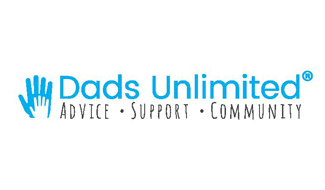Can a test show if my ex is still on drugs?
The misuse of both legal and illegal drugs can cause varying risks to your health and the welfare and safety of others around you. Drug testing is used to detect the presence of drugs in a person’s sample, such as their hair, and can show a history of drug use over a period of time covering up to 12 months or more. All participants have the right to decline a blood and alcohol test, although this may have a consequence in cases that are ordered by the court.
I recommend that drug and alcohol findings should not be used in isolation due to many variables and factors that may affect the results.
When is a drug and alcohol test required?
A drug test might be required for several reasons, for example if an individual:
- is required to undergo pre-employment screening;
- is required to take part in a workplace testing programme Is on probation for drug- related crimes;
- has been driving under the influence of drugs;
- has health problems that may be drug related;
- is pregnant and thought to be at risk for drug abuse;
- needs to rule out drug use for child custody cases.
What is hair alcohol testing?
A hair alcohol test is used to determine if a person has consumed alcohol over a certain period of time. The test works by examining the Ethyl Glucuronide (EtG) and Fatty Acid Ethyl Esters (FAEE) markers in your hair to establish alcohol consumption. Testing hair for alcohol is often used to determine alcohol abuse but it can also be required to show abstinence.
What is hair drug testing?
Hair drug testing can show up to 1 year of drug use, depending on the length of hair; 1cm of hair provides 1 month of drug history. A hair sample will be examined for the drugs analytes – the presence of the analytes in hair is a primary indicator of drug use within an allotted time frame.
The hair can also be segmented into monthly samples to allow a report to show a decreasing use of drugs over a period of time, rather than showing the whole test with a positive result.
What if you have no hair?
There are alternative tests available if your client has no hair. In some cases, if a person is required to undergo a hair alcohol or drug test, they may shave off all their hair. In cases such as these, body hair, fingernail, urine or blood tests can be used.
How much will a hair test cost (prices will vary)?
A drug such as cocaine or cannabis test costs £55 per hair segment. Additional fees such as an expert witness report to interpret the results can be requested separately. The official legal aid rates are charged for any additional expert witnessing if needed (£108 per hour).
How much will a DNA test cost?
A home maternity or paternity testing kit is a simple peace of mind test, which includes everything you need to take a DNA sample in the comfort of your own home. It looks at an up to 68 DNA markers, and tests are run twice for 99% accuracy.
The test starts from £99 for a peace of mind test. The Legal DNA test is £299 which can be used for legal matters such as immigration and change of birth certificates. The chain of custody is preserved throughout the legal DNA test. The test includes the cost of the expert report.
What samples can be tested for drugs and alcohol?
Head hair, body hair, nails, urine, oral fluid and blood are all biological matrices that can be used regularly to carry out laboratory drug testing in humans. As a general rule, the detection time is longest for hair and nail samples, followed by urine, oral fluid, and blood.
Children testing
Children living in homes with drug-addicted parents are in a steady danger of poisoning and may suffer from neglect, maltreatment, and lagging behind in development. Hair analysis could be a suitable way to examine this endangering exposure to drugs. In general, hair from younger children contains higher concentrations than from their elder siblings.
If drug abuse is suspected in families where children are found, the family court can request drug testing for the children to confirm or deny the suspicion. Children drug assessments need to be done over a short period since a child’s development is rapid within the first few years of life. Hair analysis can be employed to detect substances including opioids, benzodiazepines, barbiturates, amphetamines, cocaine, new psychoactive substances (NPS) and cannabis etc.
Professionals working in child protection often come under criticism which is why the Children Act 1989 requires proof of significant harm above a minimum threshold. Drug chemical analysis can form such an objective evidence to support their management. In the case reported here, the use of forensic science provided objective evidence within a matter of days. Similar to other forensic tests, the result of the children drug test has medico-legal consequences; therefore, hair or other types of sample analysis such as nails or urine analysis should not be used indiscriminately, and consent should be obtained. In child protection cases, the decision to obtain forensic samples should be based foremost on the child’s best interests.
Can I DNA test to see if the child is mine and what consents are needed?
A paternal/maternal legal DNA test or peace of mind test can be conducted on a child to determine if he/she is related to the mother or father.
In order for the test to be undertaken, the birth certificate is required in cases where the instructing party is the father or the mother. If the child is under the local authority supervision/ care, then an interim care order (ICO) can be made by the court to determine who has the parental consent. The ICO usually states the local authority or the named social worker to have the consent to instruct such a test.
Can I determine exposure from active use?
Passive exposure may have occurred from the use of the drug during a previous period, especially if the participant is exposed to the drug being in an environment that is contaminated with it. Environmental contamination through passive smoking or drug handling has been shown to contribute to the misinterpretation of results.
Appropriate decontamination methods, detecting relevant metabolites and by placing threshold values can potentially minimize misinterpretation. The concern of passive contamination remains a problem. The diffusion of the drug deposits into hair reduces the ability to distinguish between passive exposure and willing ingestion.
Exposure, does not only include the consumption of small and/or infrequent amounts of the drug, but also in some cases different ways of passive exposure such as contamination of hair by the drug, ingestion through food or beverage, exposure through neglected/contaminated environment, passive smoking or drug handling and also previous ingestion before the tested period has shown to contribute to the misinterpretation of results.
The drug can still be traced in the hair when someone stops using the drug. This is due to the way hair grows and the different phases of hair growth – in this case, the hair resting phase, where hair stops growing for a period of time but still contains evidence of previous drug use. This inactive hair can last for several months and if any exposure had happened before the testing period, it is likely that it will be detectable at a later stage.
What are cut-offs and why are they used?
For drug testing, a cut-off is a drug concentration that is fixed to minimise the number of false positive results. The cut-off used by the Society of Hair Testing (SoHT) and The European Workplace Drug Testing Society (EWDTS) were found to determine active drug users in adults. In children tests, the cut-off level may vary. The SoHT and EWDTS did not publish cut-off levels for children. It is advisable to report any detected concentration of the tested children samples. The main purpose of the cut-offs used in the drug hair analysis is:
- to minimise the detection of drugs used in previous periods of time instead of current use;
- to avoid the detection of drugs as a result of external contamination due to environmental exposure.
Crucial points to be aware of in children testing:
In children tests, the cut-off level may vary and therefore the level of the detected drugs were compared to the cut-off levels that are recommended by the SoHT, which determine adult drug abusers. It is important to take extra caution when interpreting a child toxicology result. The child is usually exposed to the mother’s sweat, fluids and other sources, as well as external sources such as shared bedding and pillows or even direct contamination such as the tablet/drug powder being in contact with the hair etc.
That is why, when testing alcohol and drugs in children, it is recommended that paternal and maternal samples are to be tested to minimise and reduce the potential misinterpretations of the results. Moreover, it is advisable that any swabs are to be collected from the environments where the child is exposed to, such as bedrooms and living room.
Analysis of hair and nail washings
The analysis of washings can sometimes provide an indication of whether or not the drugs detected in the hair were as a result of active exposure and/or external contamination (either through sweat or direct contamination such as the tablet/drug powder being in contact with the hair). This step will assist the toxicologist during the results interpretation to determine whether external contamination is likely or unlikely to be considered as the sole reason to explain the presence of the drug in the hair.
Conclusion
In conclusion, I recommend that drug and alcohol findings should not be used in isolation due to many variables and factors that may affect the results – they should be used in conjunction with other evidence from other tests and/or clinical assessments.
Posted on January 21, 2020
















